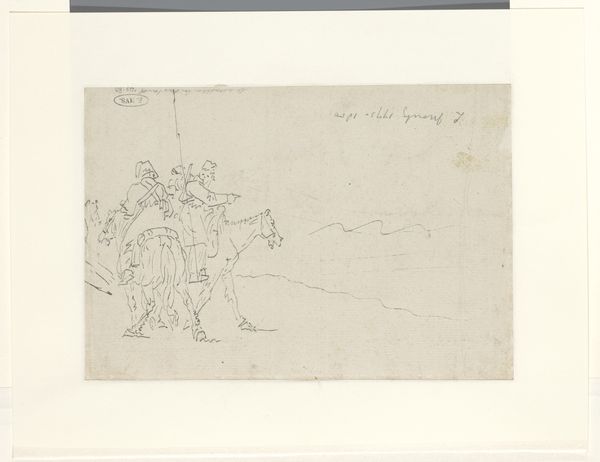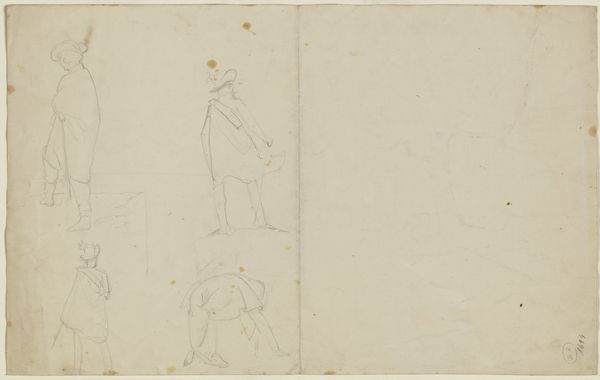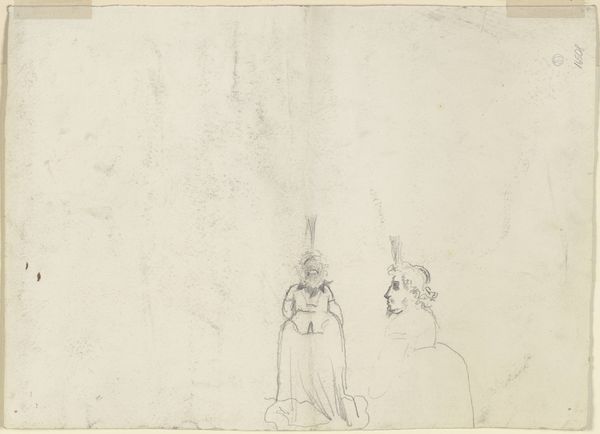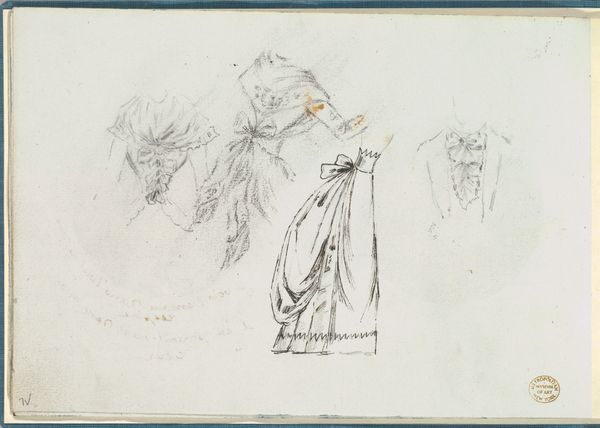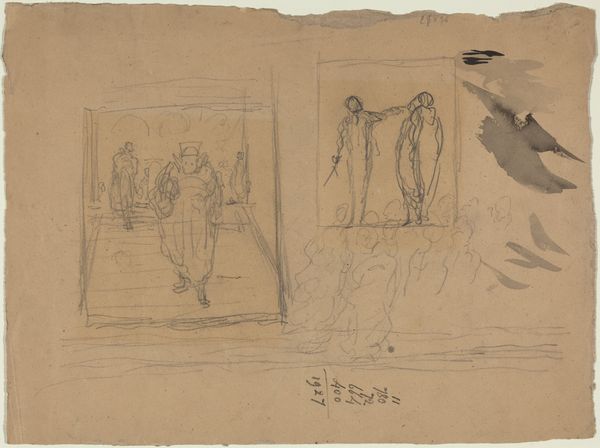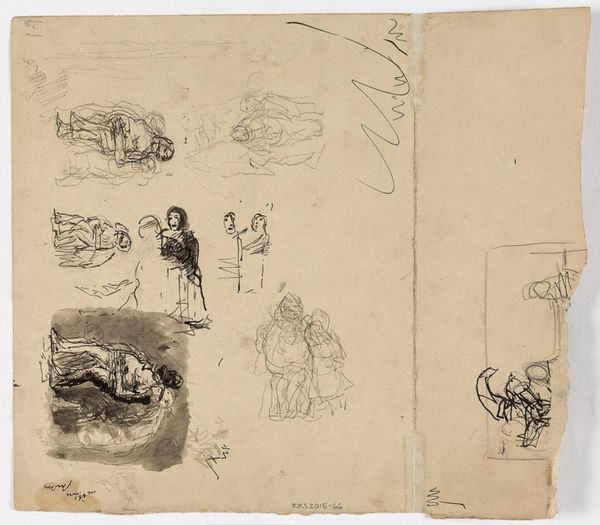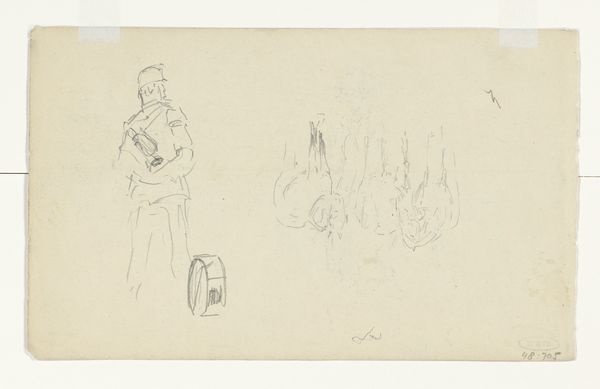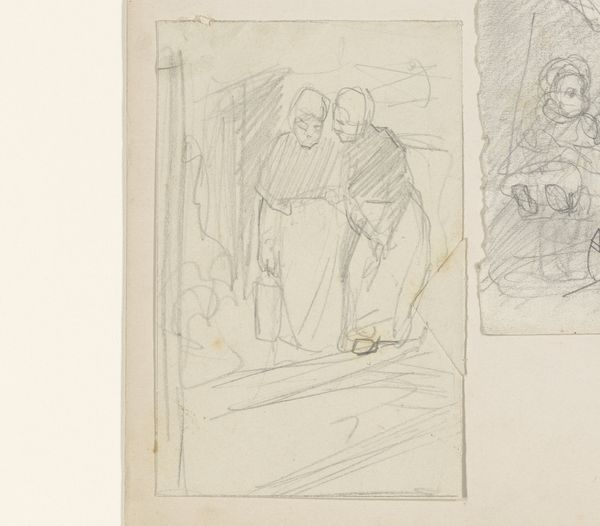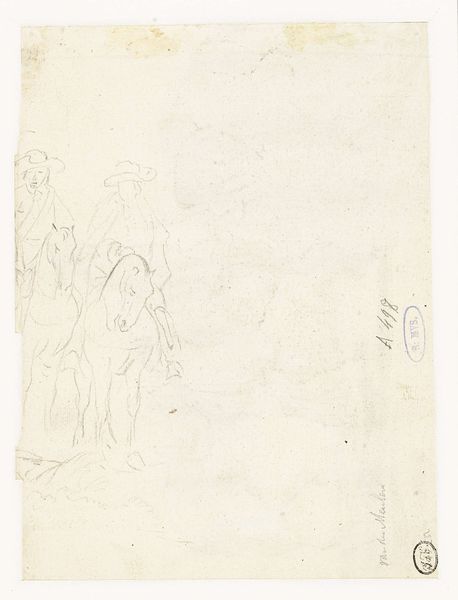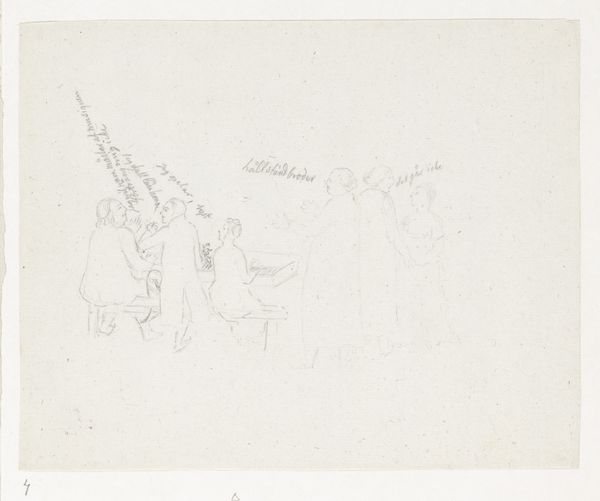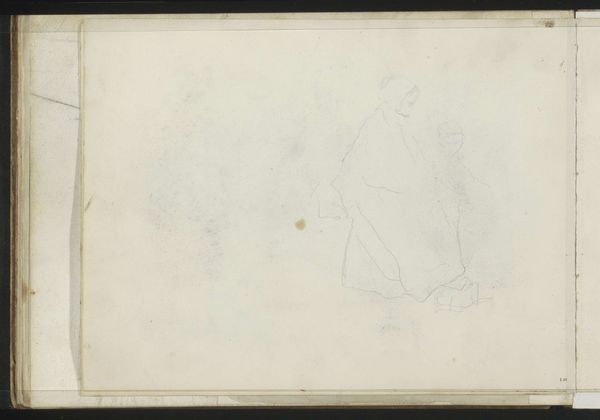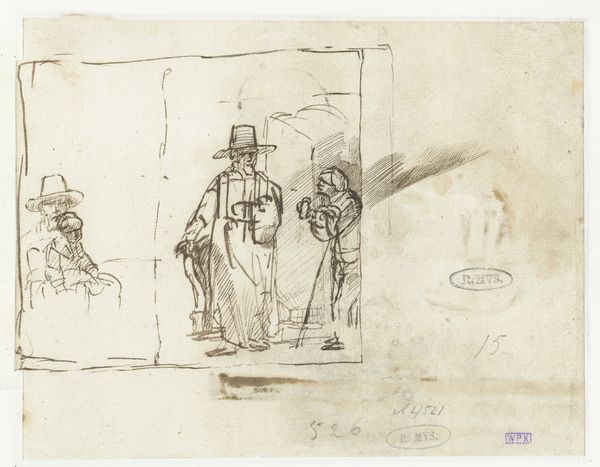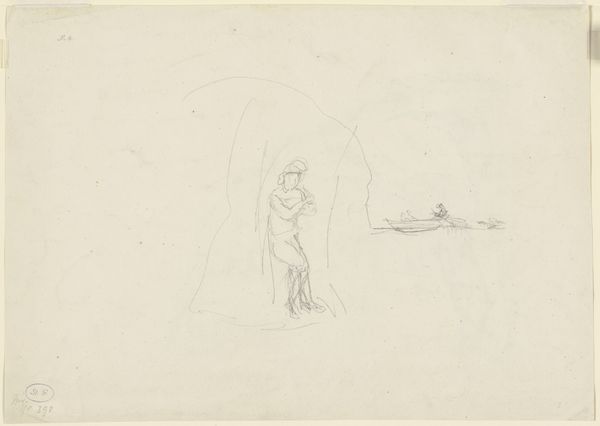
Lignende studier, bl.a. en scene i en smedie(?) 1743 - 1809
0:00
0:00
drawing, pencil
#
portrait
#
drawing
#
pencil
#
genre-painting
Dimensions: 186 mm (height) x 247 mm (width) (bladmaal)
Curator: Welcome. Before us is "Lignende studier, bl.a. en scene i en smedie(?)," a pencil drawing by Nicolai Abildgaard, likely created between 1743 and 1809. It's currently held here at the SMK. Editor: It's intriguing. I'm immediately drawn to the sketchiness of the figures. There's a palpable sense of energy and immediacy, as if we've stumbled upon a scene unfolding in real time. Curator: Abildgaard was a product of his era, deeply immersed in the societal structures that underpinned artistic patronage. Consider the genre-painting tradition – these scenes of everyday life gained popularity. Were they romanticized? Did they gloss over the hardships of the working class? These are essential questions when we examine such art. Editor: Absolutely. I’m thinking about how class and gender intersect here. The central figures appear to be laborers, perhaps smiths as suggested in the title. How might their roles be defined by societal expectations of masculinity and labor? And the women depicted in the background—what stories do they carry within this scene? Curator: The role of art during this period, often commissioned by the elite, becomes a vehicle for expressing power dynamics. These portrayals served to construct and reinforce particular notions of societal order. Abildgaard himself was a key figure in Danish neoclassicism, heavily influenced by ideas stemming from the French revolution; an intellectual and artistic whirlwind. Editor: Indeed, a whirlwind of ideologies. Viewing it through a contemporary lens, I am intrigued to interpret how historical power structures played a role. Do these workers inhabit roles with their own form of power within their craft, or are they subjugated, made symbols for social commentary? Curator: And to go even further, how do museums shape art reception when framing something like this in the context of Danish national heritage, for example? How is the political imagery constructed, and what agenda does that implicitly forward? Editor: That is such a critical thing to highlight. In conclusion, it really begs consideration. Not only is this a beautiful drawing, but also a thought-provoking gateway into social, economic, and intersectional understanding.
Comments
No comments
Be the first to comment and join the conversation on the ultimate creative platform.
